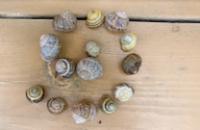
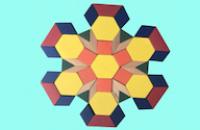
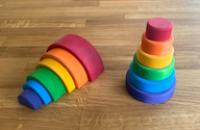
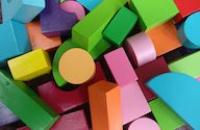
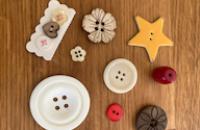
Children often enjoy riding scooters, bikes and trikes along interesting pathways around and between objects.
Adults could discuss routes and provide sign-up lists and timers for children to use when they have to take turns.
The Activity
Children make their own way round the routes on offer. Children waiting for a turn can write their name or put their name card on a board to mark their position in the queue. They can use a digital timer to measure 10 minute turns and watch the digits count down.
Encouraging mathematical thinking and reasoning:
Describing
Tell me about your route. What did you go between? Behind? Where will you go next?
How many people are waiting in front of you? What number are you in in the queue?
What numbers can you see on the timer? What does that 5 mean, do you think?
Reasoning
Why will you need to go that way? Is there another way of getting there?
Do you think you will have to wait a long or a short time? How long? Why do you think that? What number do you think will come next? What do you notice about the numbers?
Why do you think the numbers are going backwards?
Opening Out
There are a lot of people today - should we allow 5 minutes or 10 minutes for each turn?
Shall we time how long your friend takes to go round the circuit? How shall we do that?
Recording
How could we record how long people took to do a circuit?
Let's take a look at the recording board. Tell us what has been going on.
The Mathematical Journey
Shape and space:
- using positional language e.g. 'behind', 'between', or directions like 'left' and 'right'
- describing shape properties of a route e.g. 'straight', 'corner', 'bend'
Numbers:
- remembering the word sequence and saying one number for each object e.g. when counting people waiting
- cardinality i.e. that the last number gives the total e.g. number of wheels
- using the language of 'more' and 'less' or 'fewer' to compare e.g. number of minutes
- using ordinal language - 'first', 'second' or 'number 3' in the queue
Measures:
- language to compare duration ('a longer/shorter time') and speed ('slower/faster')
- explaining that a smaller number of minutes is a shorter time
Development and Variation

Trikes and bikes can be numbered and parked in matching bays. Children can decide which one they are queuing for.
You could introduce the idea of a map by creating a simple map, marking 'landmarks' in the area. Children could use laminated maps in their outdoor play.
Ask children to draw a picture of their journey so someone else could follow their route.
Resources
An outdoor area with interesting paths and landmarks.
A whiteboard and pens, or sticky name cards, for the waiting list.
Digital timers, which can be set to ring after a specific number of minutes. These provoke more discussion of decreasing numbers than sand timers.
Download a PDF of this resource.
Acknowledgement: Helen J Williams

